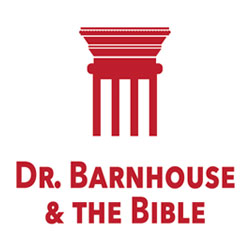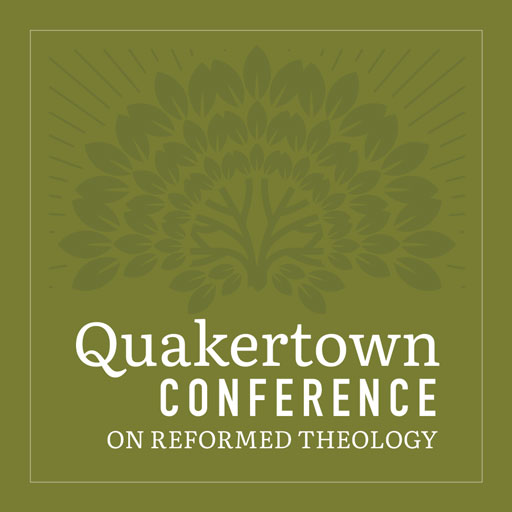
A Roadmap for the Song
When I was a boy, my parents often took my sister and me on trips to various parts of the country. I well remember my mom having a roadmap opened on her lap, meticulously tracing the intersection of the nearby highways and neighborhood roads. Whether or not we would make it to our destination was dependent on how carefully my mom read the intricate details of the map. On one occasion, we were making our way through the winding roads of the Pocono Mountains. We had missed our turn somewhere along the way. I watched intently as my mom traced the roads we had travelled on the map until she realized where we had gone wrong. While roadmaps are a thing of a bygone generation in this technologically developed world, they serve as helpful illustrations of the way in which God brings us to Christ through the various redemptive-historical details of Scripture. If we are to ever understand the Bible properly, we have to learn to understand the intricacies of redemptive history. The more difficult the trip, the more closely we have to pay attention to what steps we have taken in tracing out the redemptive historical roads on the map. This is best exemplified in how we read the Song of Songs in light of redemptive history. We need to learn utilize the roadmap of redemptive history in the OT in order to understand the characters, symbols, metaphors and allusions in the Song.
The Song of Songs has been subjected to more interpretative attempts than almost any other book in the Old Testament. There are numerous reasons for the widespread disagreement about the Song: the poetic nature, the symbolic language, the interaction of the multiplicity of characters, the sexual language and the overarching structure of the Song. Many have gotten lost while trying to make their way through the Song by focusing on the interconnectedness of the parts of the Song, while neglecting it’s place in the canon and the organic connection that it holds to the previous revelation in Scripture. When we open the roadmap of previous Old Testament revelation, we begin to see how we can take the right roads of interpretation in reading it. Consider the following:
1. The Davidic Covenant.
The immediate context of the Song in redemptive history is the period of revelation related to the Davidic Covenant. The Bible is structured by covenant; therefore, we should expect the immediate context of whatever book we are reading to be the covenantal administration in which it was revealed. Whether or not Solomon wrote the Song (and I am personally convinced that he is the author), we can be sure that the Song of Songs is set in the context of God’s covenant with David. In fact, the very name of the chief character of the Song is “the Beloved,” which, in Hebrew, is etymologically synonymous with the name of David. David was the king of Israel, chosen by God and appointed to establish the Kingdom of God in his day. When David was finally made King in the place of Saul, this is what we read, “Then all the tribes of Israel came to David at Hebron and spoke, saying, “Indeed we are your bone and your flesh'” (2 Samuel 5:1). This is the language of marriage drawn out of Genesis 2:23. David functioned like the Bridegroom of the people of God. The same analogy is used in the New Testament in reference to the Lord Jesus Christ, the Son of David. Jesus is the Bridegroom of His church (Mark 2:19-20; Matthew 25:1-10; John 3:29).
The multiplicity of characters in the Song also play a role in establishing this as the setting of the Song. For instance, who is the Shulamite (Song 6:13)? The name Shulamite is derived from the Hebrew words meaning, “One who received peace.” The Shulamite is representative, in the Song, of all true believers who see the glory and beauty of the beloved King. Throughout the Song, the Shulamite seeks to stir up in others–namely, “the Daughters of Jerusalem”–a desire for the beloved King. This should strike us as a strange thing for a bride to do with her friends, unless, of course, we understand the Daughters of Jerusalem to be “all sorts of professing believers,” as John Owen understood them to be. Jonathan Edwards explained, “In many places of Solomon’s Song, the spouse is represented as conversing with a number of the daughters of Jerusalem that sought the bridegroom with her, and therefore she speaks in the plural number. Canticles 1:4, “Draw me, we will run after thee; we will be glad and rejoice in thee. We will remember thy love more than wine.” In the prophetic literature of the Old Testament, the Lord often addressed Israel under the name “daughter of Zion,” or “daughter of Jerusalem” (e.g. Is. 4:4; 10;32; 37:22; 52:2). When Jesus is going to the cross, there is a group of women weeping nearby. The Savior turns to them and say, “Daughters of Jerusalem, do not weep for me, but weep for yourselves and for your children” 9Luke 23:28). Here, Jesus is clearly rebuking an unbelieving group of members in the Old Covenant church, with the hope of seeing them turn to him in brokenness over their sin.
It also seems as though Solomon is reflecting on the relationship that God had first given to his father in relationship to the church in redemptive history. Solomon had written 1005 songs (1 Kings 4:32). This is the superlative song of Solomon! He is reflecting on the role he then sustained to the Old Covenant church as the King of Israel, the successor of his father. This accounts for the multiplicity of characters and the sometimes inexplicable interactions between the characters in the Song.
2. The Garden-Temple.
The language of the Song is ripe with botanical imagery. Pomegranates, palm trees, cedars, and lilies are strewn throughout the pages of this love poem. Solomon built the Temple and adorned it with ornate botanical imagery. The Temple was built out of the cedar of Lebanon and had ornate pomegranate, palm trees and lilies carved around it. The botanical imagery of the Temple is meant to draw our minds back to the Garden-Temple in which God dwelt with Adam and Eve. It should not surprise us to find a nuptial love poem in a Garden-Temple setting, when we consider the purposes of God in redemptive-history. After the fall, God promised to reopen paradise for man through the redeeming grace and love of the second Adam, Jesus Christ.
3. Redemptive-Historical Events.
In Song of Songs 2:14 we read about the cleft of the rock. In redemptive history, the Lord hid Moses in the cleft of the rock when he prayed to see His glory. The cleft of the rock becomes a metaphor used to describe the safety of being “in Christ.” Matthew Henry concluded as much, when he commented on Song 2:14, “Christ is the rock, to whom she flies for shelter and in whom alone she can think herself safe and find herself easy, as a dove in the hole of a rock, when struck at by the birds of prey, Jer. 48:28.” In the Song, instead of the church asking the Lord to see His face (as Moses did), it is the Beloved who says to the believer, “O my dove, in the clefts of the rock, In the secret places of the cliff, Let me see your face, Let me hear your voice; For your voice is sweet, And your face is lovely.” There is a strong inverted relationship to the allusion from Exodus 33. The mutual communication of love and fellowship is expressed through the vehicle of a redemptive-historical allusion. There are many such allusions scattered throughout the Song of Songs. In each case, the covenantal structure of Scripture allows the writer of the Song to employ these allusions. While it will by no means make interpreting the Song easy, those who are most familiar with the Old Covenant Scriptures will be able to glean the most from this superlative redemptive-historical Song.
While there are so many other passages in the Song that we could develop under these three categories, what has been written should suffice to stir up in us a desire to carefully trace out the redemptive-historical roadmap God has given us in the Old Testament for our understanding of the Song. As we give ourselves to a careful meditation on the previous revelation–in light of its fulfillment in Christ–we will be better prepared to make our way through the hills and valleys of the superlative redemptive-historical Song in Scripture–even as we will through the other parts of God’s revelation of Christ in Scripture.
























